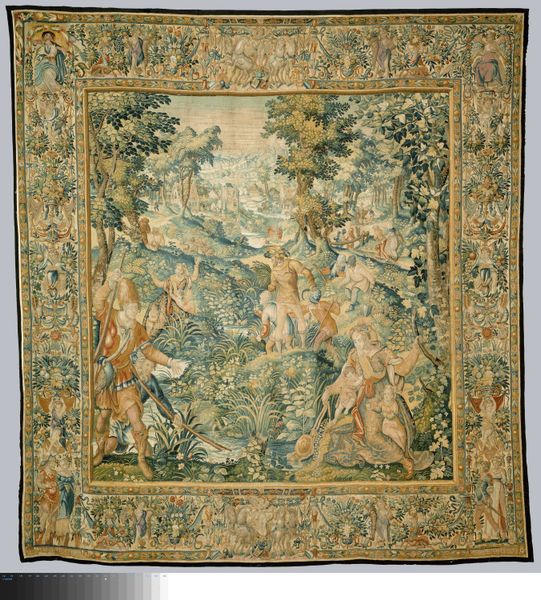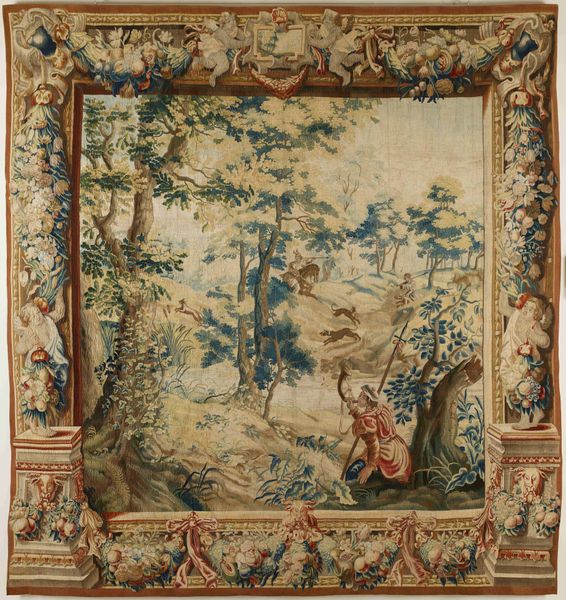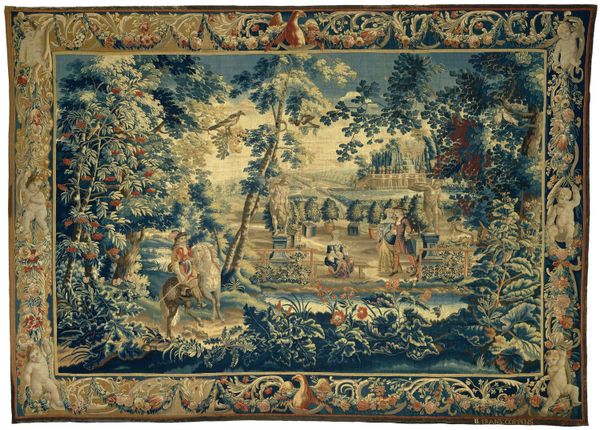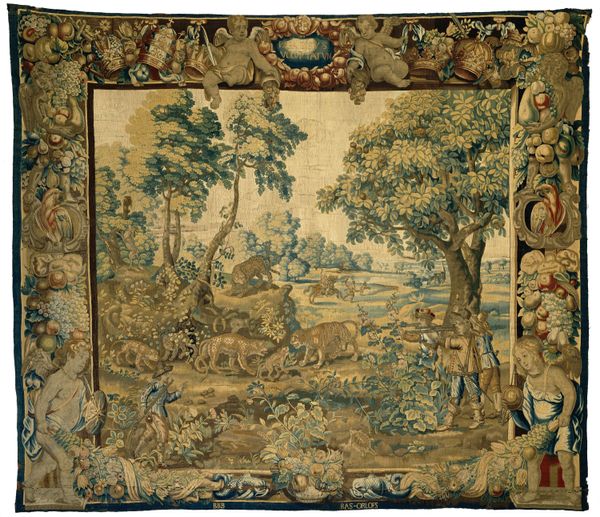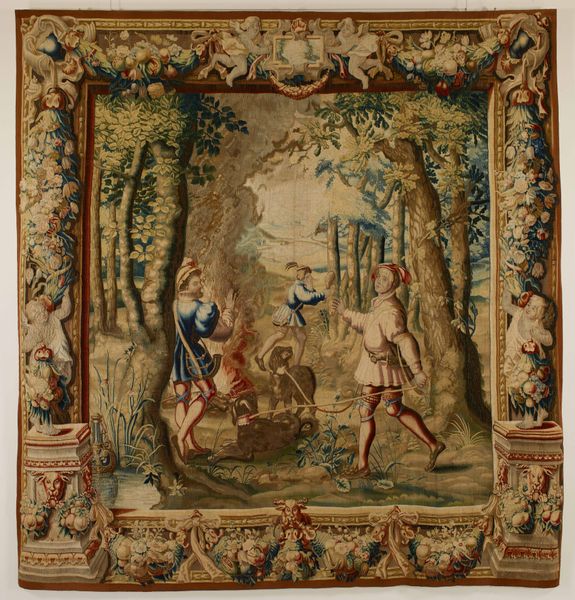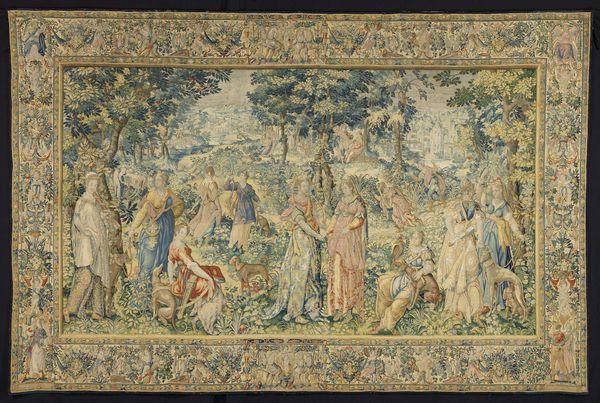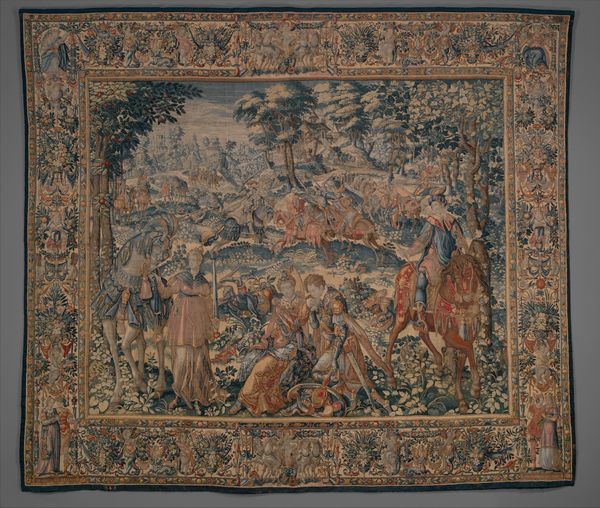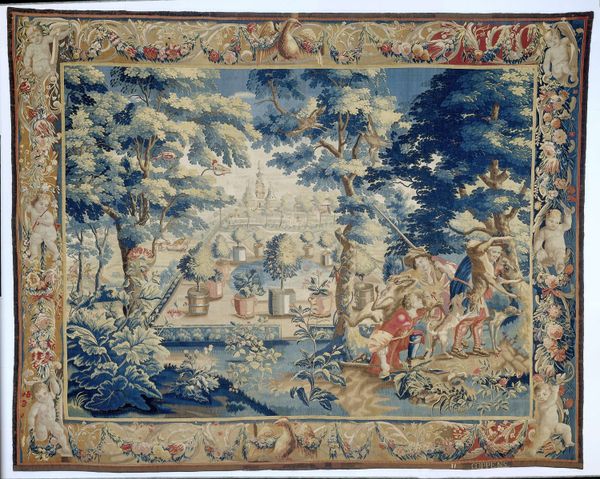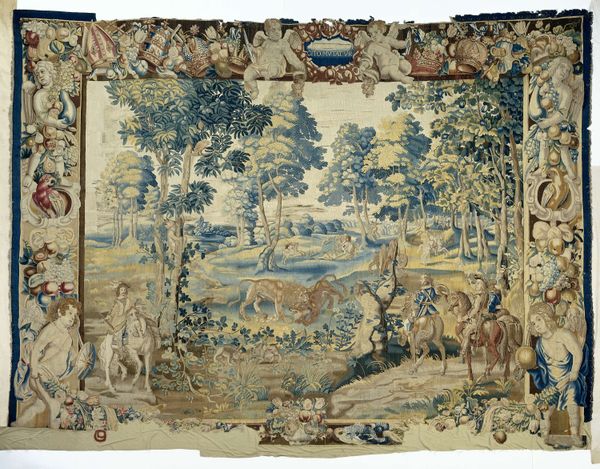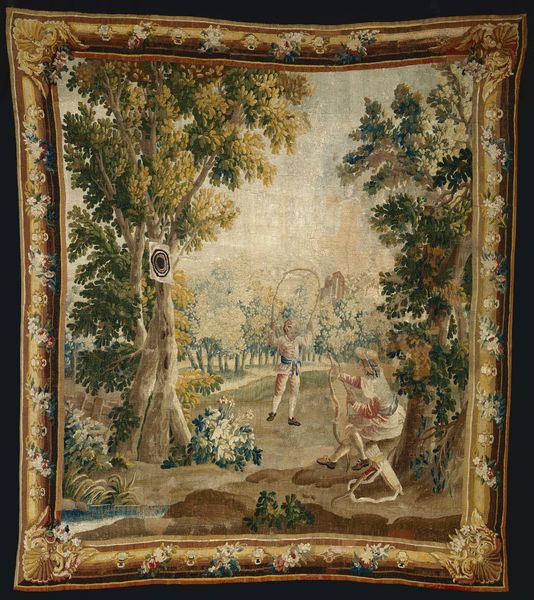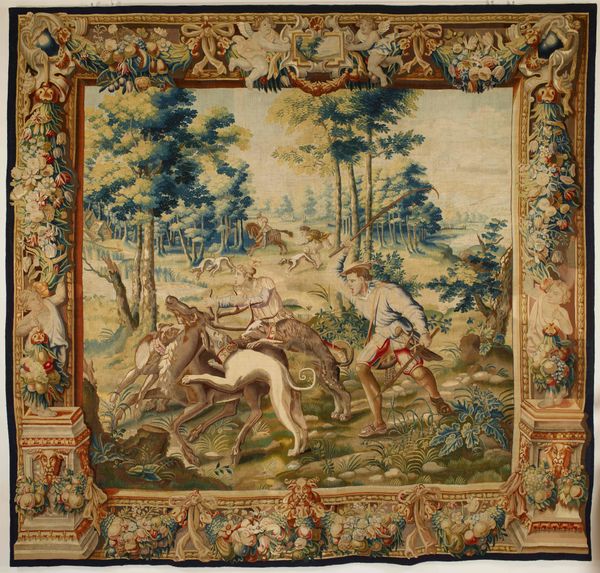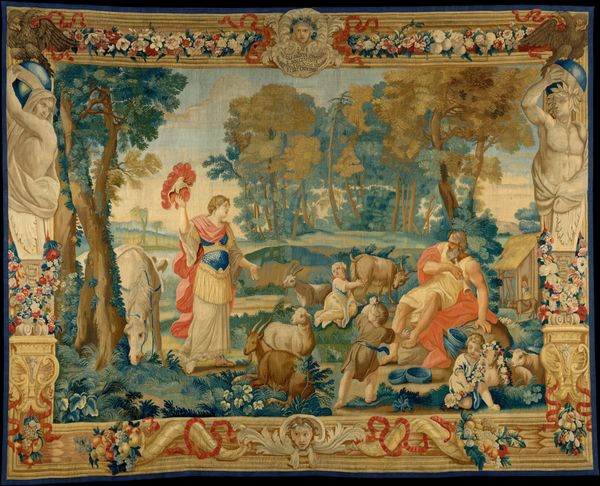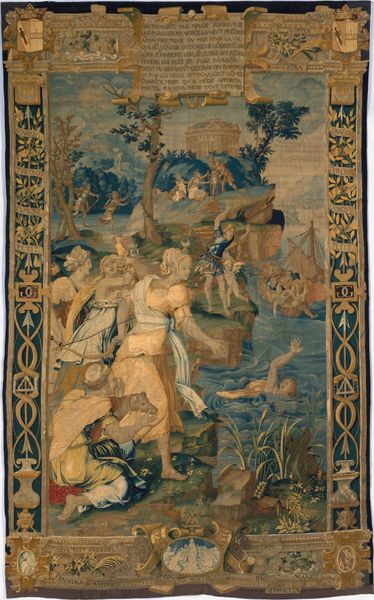
Orpheus Playing the Lyre to Hades and Persephone, from Orpheus and Eurydice or The Metamorphoses c. 1685
0:00
0:00
weaving, textile
#
narrative-art
#
baroque
#
weaving
#
textile
#
oil painting
#
history-painting
Dimensions: 328.14 × 299.09 cm (129 3/16 × 117 3/4 in.)
Copyright: Public Domain
Editor: This is a tapestry from circa 1685 titled "Orpheus Playing the Lyre to Hades and Persephone," attributed to the Wauters Workshop. The level of detail in this weaving is just incredible. How should we think about this piece? Curator: Let's consider this tapestry not just as an image, but as a product of specific labor and materials. Look at the complexity of the weave – different fibers, dyes, and the sheer time it would have taken to create. How does knowing this shift our understanding of the scene? Editor: It’s easy to get lost in the story, but thinking about the weavers... that brings a whole different dimension. Were tapestries like this considered fine art or more like… interior decoration at the time? Curator: That's a critical question. Traditionally, tapestry was seen as both. Displaying it showed wealth but also served a practical purpose. These weren't simply decorative; they were insulators, status symbols, and powerful narrative devices. Now, consider the wool, the dyes, probably imported. It reveals economic relationships, trade routes. Editor: So, it's not just a depiction of a mythological scene, but it's embedded in a whole network of production and consumption. The myth is almost secondary to the materials used. Curator: Not quite secondary, but interwoven. The choice of subject matter, Orpheus charming the rulers of the underworld, speaks to the power of art but also to the patrons who commissioned it. Who would want such a piece, and what statement were they making? Editor: It's fascinating to think about the raw materials transformed through skilled labor into this complex image and a valuable commodity. I’ll never see tapestry the same way. Curator: Exactly! Seeing the tapestry through a material lens enriches the narrative, connecting it to its physical making, social context, and historical forces.
Comments
No comments
Be the first to comment and join the conversation on the ultimate creative platform.
